Where land and water meet there is often mud, and those of us using small boats likely have to take it into account when we’re cruising. Mud can be messy at best, a barrier or a trap at worst. On the Ohio River, a short span of mud between dry ground and my boat actually pulled the boots and socks right off my feet.
In the October 2017 issue, I wrote about mud pattens, squares of wood I can tie to my boots to keep me from sinking deep into soft mud. They’ve worked well for me in several intertidal mud flats, though I have to walk with my legs splayed and I did encounter one river mouth that had mud so sticky I had to turn back.
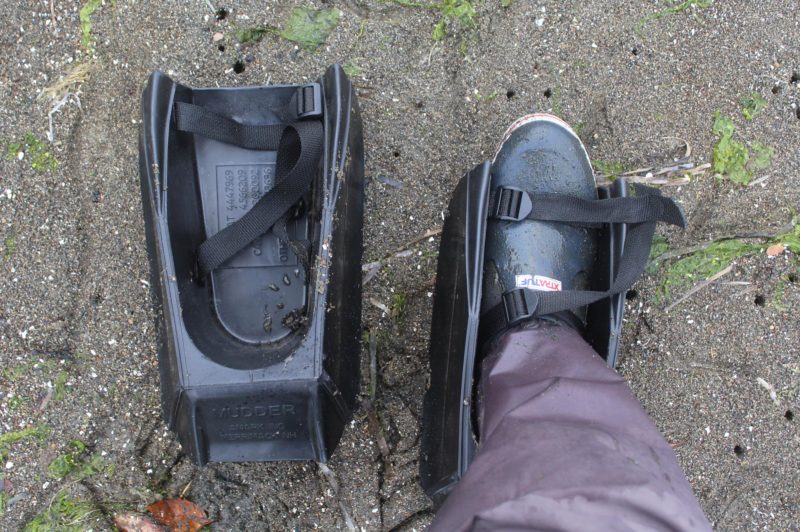
Straps hold the Mudders to the boots. The rubber deck shoe here is size 13. My size-14 rubber boots fit too.
I recently had the opportunity to try a pair of Mudder Boots, a product that takes a different approach to keeping on top of mud. Instead of using large, rigid panels, the Mudders are made of flexible plastic and expand only when the wearer steps into soft mud. On solid ground, the wings are tucked tight to the sides of your feet and have a width of only 8”, not enough to be awkward to walk in. In the mud, the wings flare to a width of about 14″. The manufacturer pegs the surface area of the expanded Mudder at 180 square inches. That’s more than the 144 square inches of my 12″ x 12″ pattens and almost as much as the 196 square inches of my 14″ x 14″ pattens.
The Mudders come in a single, one-size-fits-all version, and each weighs 2.35 lbs. A pair of straps with easily adjustable ladder-lock buckles cinch over the instep and the ball of the foot for a snug fit. The recess is just wide enough for my size-14 rubber boots with thick soles, and a good fit for my size-13 slip-on deck shoes.
With a patten, it’s essential to have the ball of your foot close to its front edge. At the end of your stride, the toe pushes down into the mud while the heel pulls the patten up, prying it out. If your whole foot is on the patten, you’re only trying to lift the patten free, which may not overcome the suction and, while you’re trying to pull up with the back foot, you’re only pushing the front foot deeper. With the Mudders, I have a few inches of my toe extending beyond the front, so I do get some prying action to pull them free, but they don’t rely on that alone. The extension at the heel is cut higher than the wings, and at the end of the stride, it will let air in under the sole. The wings also retract as you take the weight off, lessening the surface area in contact with the mud and pulling air in from the heel.
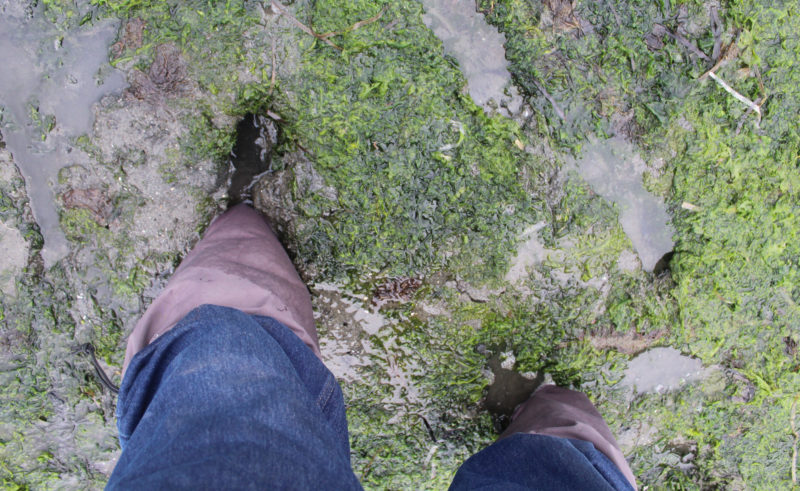 Photographs by the author
Photographs by the authorWith just my deck shoes and waterproof socks on, I sank down to mid shin and could barely pull a foot out without losing a shoe.
I recently came ashore in a cove where there was some very soft, sticky mud. I could barely walk in it with my deck shoes without losing them, and each step took an effort that threatened to pull me over. With the Mudders on, the mud slowed me down, as I expected, but not nearly as much as going without them. I made steady progress without having to tug the back foot free. The wings fanned out as they’re meant to and brought the sinking to a stop.
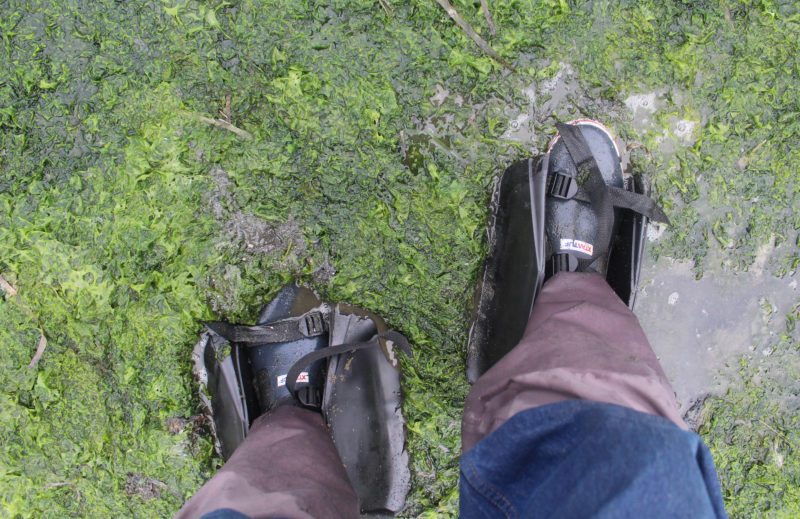
In the same patch of mud, the Mudders kept me close to the surface. Here I have my weight on my left foot and the wings have spread outward.
An unexpected bonus was being able to walk comfortably on sand and hard ground without the awkwardness of pattens. The tread on the bottom provided a good grip on a steep grassy slope I climbed to leave the mud for high ground. Traversing the slope gave me my only complaint about the Mudders: the high sides pressed hard against the sides of my legs just above my ankles.
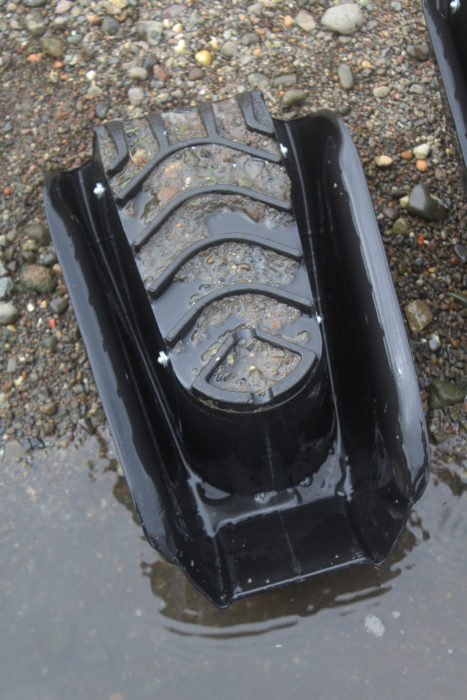
The sole’s pronounced ridges provide good traction, and their wide spacing makes it easy to scrape out sticky mud. The wings, here relaxed and close in, have curved edges that make them flare when pressed into soft ground.
When I was done tromping around in the mud, I waded a bit in water over a firm gravelly bottom to clean the Mudders. When I took them off, there was still a lot of mud on the soles. The mud I’d been walking in was so thick and sticky that I had to scrape it away with a stick (it was a wonder I could walk in it). The treads have plenty of space between the ridges, so with a bit of work I could get them clean.
If your boating takes you to areas of mud and soft ground, Mudders will give you the ability to move freely and explore places you’ve always avoided.![]()
Christopher Cunningham is the editor of Small Boats Magazine and thanks reader Dallen Bounds for the suggestion and the loan of the Mudders.
Mudder Boots are available direct from the manufacturer for $144 per pair.
Is there a product that might be useful for boatbuilding, cruising, or shore-side camping that you’d like us to review? Please email your suggestions.

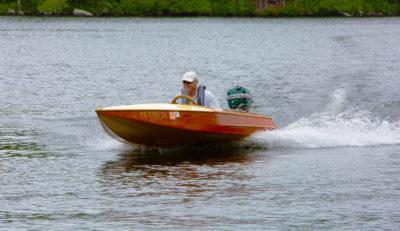
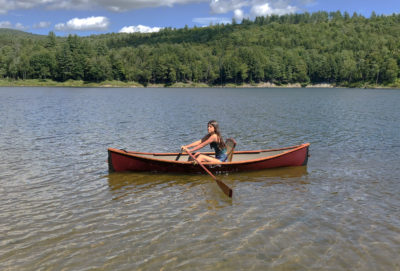
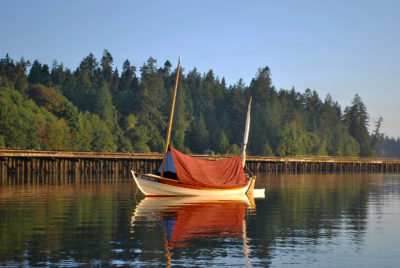
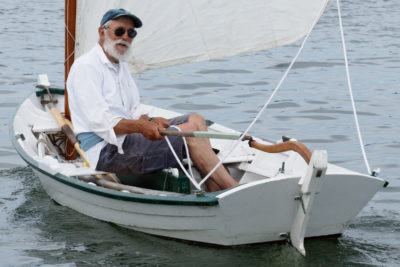
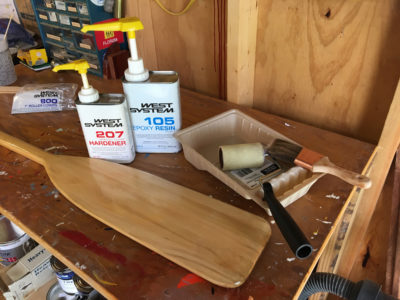
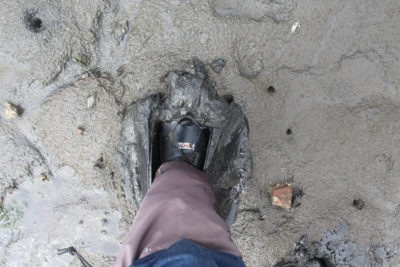
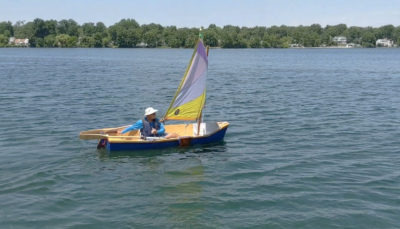
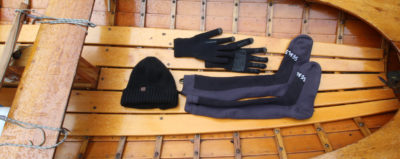

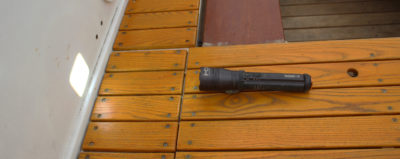
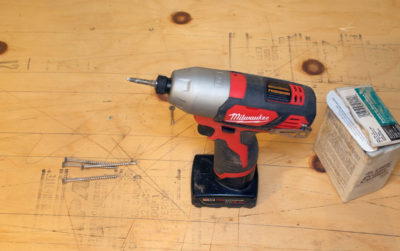
Be interesting to see how they work in clam flat mud. Clammers just hip boot it. Stuff is so sticky that in venturing out on it with teva type sandals I pulled a sandal apart. I tried pattens and they stuck. What I’ve been doing is wearing shorts and putting on zip-up paddling boots.
Nice review. Glad they worked so well for you. When I am using them and sleeping aboard, I fasten my boots together using the grommets at the back and attach them to the boat. When the tide comes in it helps wash them cleaner than I could get them without a brush. I carry them home in a plastic square dishpan and hose them off prior to storage. The price has gone up in the past 10 years.
I think people should be careful where they use these.
I purchased a pair after researching ways to reach my boat when the tide was out. Luckily I had the sense to undertake a trial run with my wife watching. After a few steps I sank so the wings went under the mud. I couldn’t pull my foot up and gradually, over about thirty minutes ended up to my thighs completely trapped. With the tide turning, it took an emergency call to the fire brigade to rescue me. Embarrassment apart, I could have lost my life.
Mudder Boots originally were listed in the long-gone Herter’s catalog a bazillion years ago—although I think they were called Bog Shoes or Bog boots at the time.
Back then they were relatively expensive.
I didn’t buy a pair, and have regretted it ever since.
Tried my hand at making my own, but that didn’t work out.
Anyway, as of this date, 11 January 2021, they are ‘out of stock’ but as soon as they come I’m buying a pair.
Bought 2 pair, for my son and myself, used 2 times and work sooo good only complaint is the strap system which was quickly rectified by replacing with ratchet snowboard binding straps, wider, quicker made to manipulate with gloves on. Easy